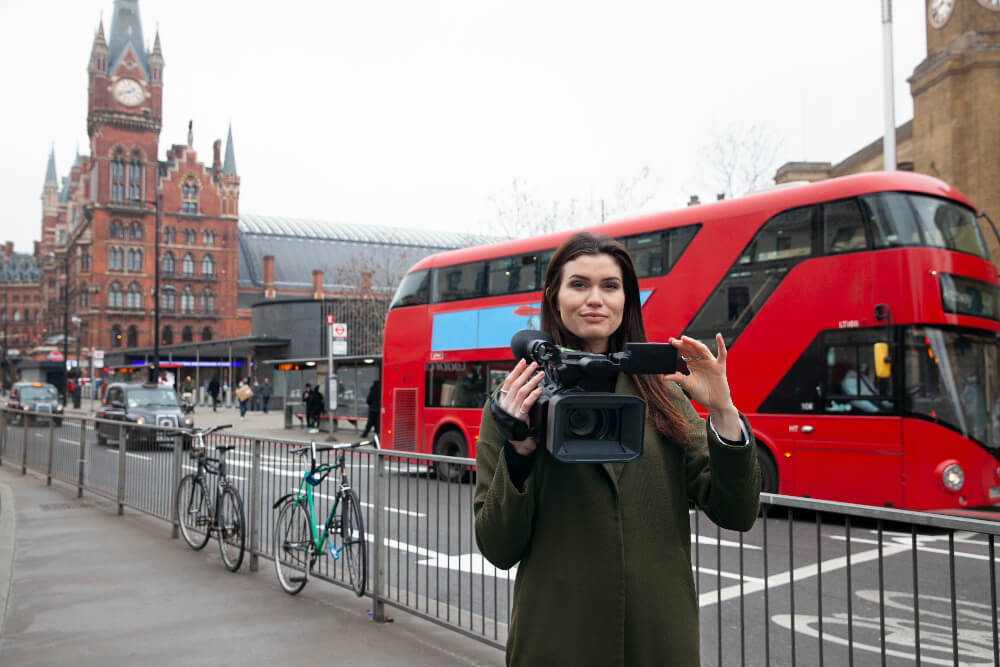Planning a trip to England as a senior travel historic sites can be both exciting and a bit daunting. Common questions often arise about the best historic sites to visit and how accessible they are.
This guide aims to address those concerns, providing practical tips and engaging stories to help you plan a memorable and hassle-free journey.
England, with its rich history and cultural heritage, offers a plethora of destinations that cater to senior travelers.
From medieval castles to Roman baths, each site tells a story that transports you back in time. Whether you’re exploring the cobblestone streets of ancient towns or marveling at the architectural wonders of cathedrals, England promises an enriching experience.
However, understanding the accessibility of these sites is crucial for a smooth and enjoyable trip.
This guide will provide detailed insights into historic sites and practical tips to ensure your travel experience is comfortable and rewarding.

Common Questions and Concerns
Which Historic Sites in England Are a Must-See?
England is brimming with historic sites, but some stand out for their beauty, significance, and accessibility.
Here’s a closer look at a few must-see locations:
The Tower of London
One of England’s most iconic landmarks, the Tower of London, is steeped in history. Originally built as a royal palace and fortress, it later became infamous as a prison.
Today, it houses the Crown Jewels and offers a fascinating glimpse into England’s turbulent past.
Accessibility: The Tower of London provides ramped access to several areas and elevators where possible. However, some parts, like the medieval towers, may have limited access due to their historical structure. Audio guides and visual aids are available for those with hearing or visual impairments.
Tips: Arrive early to avoid crowds, and consider joining a guided tour to learn more about the site’s rich history.
Stonehenge
Stonehenge, the prehistoric monument located in Wiltshire, is a marvel of ancient engineering and mystery.
The stone circle, believed to be constructed between 3000 BC and 2000 BC, continues to intrigue historians and archaeologists.
Accessibility: Stonehenge offers a visitor shuttle service with wheelchair access, and the pathways around the stones are suitable for wheelchairs and mobility scooters.
The visitor center provides accessible toilets, and wheelchairs can be borrowed free of charge.
Tips: Visit during off-peak hours for a more peaceful experience and take advantage of the audio guides available in multiple languages.
Bath
The city of Bath is renowned for its Roman-built baths and stunning Georgian architecture. The Roman Baths are one of the best-preserved Roman sites in the world and offer an immersive historical experience.
Accessibility: The Roman Baths provide wheelchair access to many areas, with lifts and ramps facilitating movement.
Accessible toilets are available, and wheelchairs can be borrowed from the reception. There are also tactile exhibits for visitors with visual impairments.
Tips: Spend a day exploring Bath’s other attractions, such as the Bath Abbey and the Royal Crescent. The city is relatively compact, making it easy to navigate on foot or by public transport.
York Minster
York Minster, one of the largest Gothic cathedrals in Northern Europe, is a masterpiece of medieval architecture.
Its stunning stained glass windows and intricate stone carvings are a testament to the craftsmanship of the period.
Accessibility: York Minster offers step-free access to most areas, with ramps and elevators available. There are accessible toilets, and the Minster provides wheelchairs for visitors. Guided tours can be tailored to meet specific accessibility needs.
Tips: Allow time to explore the charming city of York, with its historic streets, museums, and the famous Shambles, a medieval street with overhanging timber-framed buildings.
How Accessible Are These Sites?
Accessibility varies, but many historic sites have made significant strides in accommodating visitors with mobility issues.
Here are some general accessibility features you can expect:
Ramped Access and Elevators
Many historic sites, like the Tower of London and York Minster, offer ramped access and elevators.
These modifications ensure that visitors with mobility issues can explore significant portions of these attractions.
However, due to the nature of some historic structures, certain areas may remain inaccessible.
Wheelchair Rentals
Sites like the Roman Baths in Bath and Stonehenge provide wheelchair rentals. This service is invaluable for those who may not be able to bring their own mobility aids.
Always check in advance to confirm availability and make any necessary reservations.
Guided Tours
Many locations offer guided tours specifically designed for visitors with disabilities.
These tours often include detailed explanations and accessible routes, ensuring that everyone can enjoy the site to the fullest.
Be sure to inquire about these options when planning your visit.
What Are the Best Modes of Transportation?
Traveling around England is straightforward, with several options catering to senior travelers. Here are some transportation tips:
Trains
England’s train network is extensive and generally senior-friendly. Most trains offer priority seating and wheelchair access.
Services like the National Rail Enquiries website and app can provide detailed information on accessibility features for specific routes and stations.
Tips: Book your tickets in advance and consider requesting assistance if needed. Many stations offer help with boarding and alighting, as well as guidance through the station.
Buses
Local buses in England often have low-floor entry for easy boarding and designated spaces for wheelchairs and mobility scooters.
Major cities like London, Manchester, and Birmingham have extensive bus networks that are well-suited for senior travelers.
Tips: Check the local bus company’s website for accessibility information and consider using a contactless payment method for convenience.
Taxis
Accessible taxis can be pre-booked, especially in major cities. Companies like Uber also offer wheelchair-accessible vehicles in certain areas.
Taxis can be a convenient option for shorter journeys or when public transport is not accessible.
Tips: Always specify your accessibility needs when booking a taxi and confirm the availability of appropriate vehicles.
Tips for Senior Travel Historic Sites
Plan Ahead
Research Accessibility
Before your trip, research the accessibility features of the sites you plan to visit. Most historic sites have detailed information on their websites, including maps, accessibility guides, and contact information for further inquiries. If you’re looking for more inspiration on senior-friendly travel options, check out https://www.moatrek.com/blog/new-zealand-tours-seniors for tips and ideas tailored specifically for senior travelers.
This preparation can help you avoid unexpected challenges and ensure a smoother experience.
Example: When planning a visit to the Tower of London, my aunt and I checked their website for accessibility details.
We discovered that while some areas had ramps, others required navigating stairs.
This information allowed us to plan our route and ensure my aunt could comfortably explore the areas she was most interested in.
Book Accommodations
Look for hotels with amenities like elevators, walk-in showers, and accessible dining areas. Many hotels offer rooms specifically designed for guests with mobility issues.
Websites like Booking.com and Expedia allow you to filter search results based on accessibility features.
Example: During a trip to Bath, I booked a room at a hotel with a walk-in shower and elevator access.
The hotel staff were accommodating, and the accessible amenities made our stay comfortable and enjoyable.
Pack Smart
Comfortable Shoes
Historic sites often involve a lot of walking, so wear sturdy, comfortable shoes. Look for shoes with good arch support and non-slip soles to navigate various terrains safely.
Essential Medications
Keep your medications in your carry-on bag for easy access. It’s also a good idea to bring a list of your medications, including their generic names, in case you need to refill them while abroad.
Light Layers
England’s weather can be unpredictable, so pack light layers that you can easily add or remove.
This approach ensures you’re prepared for sudden changes in temperature or unexpected rain.
Example: On a trip to Stonehenge, we encountered a chilly morning that turned into a warm afternoon.
Having light layers allowed us to stay comfortable throughout the day.
Take Your Time
Rest Breaks
Plan for regular breaks to avoid fatigue. Many historic sites have benches or designated rest areas where you can sit and relax.
Don’t hesitate to take advantage of these spots to recharge.
Example: While exploring York Minster, we took frequent breaks to sit and admire the beautiful architecture. These pauses allowed us to enjoy the visit without feeling rushed or exhausted.
Guided Tours
Consider joining guided tours that offer detailed information and rest stops.
These tours often provide in-depth insights into the site’s history and significance, making your visit more enriching and enjoyable.
Example: During a guided tour of the Roman Baths, our guide ensured we had ample time to rest and absorb the fascinating history of the site.
The tour’s pace was perfect for senior travel historic sites, making it a highlight of our trip.

Relatable Stories
Exploring the Tower of London with Grandma
When I took my grandmother to the Tower of London, her excitement was palpable. We used the ramps and elevators to navigate the grounds easily, and she was thrilled to see the Crown Jewels up close.
The staff were incredibly accommodating, making our visit both smooth and unforgettable. Despite some areas being less accessible, the overall experience was positive, thanks to the thoughtful design and helpful personnel.
Discovering Bath’s Roman Baths
My friend, who uses a wheelchair, and I visited the Roman Baths in Bath. We found the wheelchair rental service incredibly helpful, and the accessible pathways allowed us to explore the ancient site comfortably.
The audio guide provided fascinating insights, making our visit enriching and enjoyable. The tactile exhibits were a pleasant surprise, offering a unique way to experience the site’s history.
A Day at Stonehenge
Visiting Stonehenge with my father, who has limited mobility, was a memorable experience. The visitor shuttle service with wheelchair access made it easy for us to reach the monument.
The accessible pathways around the stones allowed us to get close enough to appreciate their grandeur without any difficulties.
The visitor center was well-equipped with accessible facilities, making our trip both comfortable and educational.
Detailed Insights into Popular Historic Sites
The Tower of London
History and Significance
The Tower of London, established by William the Conqueror in 1066, has served various purposes over the centuries, from a royal palace to a prison and a treasury.
Its rich history includes tales of intrigue, imprisonment, and even executions.
Accessibility: The Tower of London provides accessible routes for visitors with mobility challenges. Key areas like the Jewel House and the Crown Jewels exhibit are wheelchair accessible.
The Yeoman Warder tours, though involving some steps, offer engaging narratives about the tower’s history. Visual aids and braille guides are available for visitors with visual impairments.
Visitor Tips: Plan your visit during off-peak hours to avoid large crowds. Wear comfortable shoes, as there is a lot to explore. Consider joining a Yeoman Warder tour for an informative and entertaining experience.
Stonehenge
History and Significance
Stonehenge, dating back to around 3000 BC, remains one of the most mysterious and iconic prehistoric monuments in the world.
Its purpose, whether for astronomical, ceremonial, or burial practices, continues to spark debate among historians and archaeologists.
Accessibility: Stonehenge offers a visitor shuttle service with wheelchair access, making it easier to reach the monument from the visitor center.
The pathways around the stones are designed to be accessible for wheelchairs and mobility scooters.
The visitor center itself is fully accessible, with exhibits that provide a comprehensive understanding of Stonehenge’s history and significance.
Visitor Tips: Visit during the early morning or late afternoon to avoid peak tourist hours. Use the audio guide for detailed insights into the site’s history. Don’t forget to explore the visitor center, which houses fascinating exhibits and artifacts.
The Roman Baths
History and Significance
The Roman Baths in Bath are among the best-preserved Roman remains in the world. Built around 70 AD, the baths were a center of public bathing and socializing in Roman Britain. The site includes the Sacred Spring, the Roman Temple, and the Bath House.
Accessibility: The Roman Baths provide wheelchair access to most areas, with ramps and lifts facilitating movement.
The site offers accessible toilets, and wheelchairs can be borrowed from the reception.
Tactile exhibits and audio guides are available, enhancing the experience for visitors with visual impairments.
Visitor Tips: Allocate a few hours to fully explore the baths and the accompanying museum. Take advantage of the guided tours for a deeper understanding of the site’s historical context. Consider visiting the nearby Bath Abbey and exploring the city’s charming streets.
York Minster
History and Significance
York Minster, a Gothic cathedral in York, is renowned for its magnificent architecture and stunning stained glass windows.
Completed in the 15th century, the Minster stands as a testament to medieval craftsmanship and religious devotion.
Accessibility: York Minster offers step-free access to most areas, with ramps and elevators available.
Accessible toilets are provided, and the Minster has wheelchairs for visitors. The site offers guided tours tailored to meet specific accessibility needs, ensuring an inclusive experience for all visitors.
Visitor Tips: Spend time admiring the intricate details of the stained glass windows. Join a guided tour to learn about the Minster’s history and architectural significance. Explore the surrounding historic city of York, with its charming streets and museums.
Practical Tips for a Smooth Journey
Choosing Accessible Accommodations
When selecting accommodations, prioritize hotels that offer accessible features such as elevators, walk-in showers, and accessible dining areas.
Websites like Booking.com and Expedia allow you to filter search results based on accessibility features.
Reading reviews from other travelers with similar needs can provide valuable insights.
Example: During a trip to Bath, I booked a room at a hotel with a walk-in shower and elevator access.
The hotel staff were accommodating, and the accessible amenities made our stay comfortable and enjoyable.
Utilizing Public Transport
Public transport in England is generally senior-friendly, with trains and buses offering priority seating and wheelchair access.
The National Rail Enquiries website and app provide detailed information on accessibility features for specific routes and stations.
Example: On a trip to London, my grandfather and I used the city’s extensive bus network. The buses had low-floor entry, making boarding and alighting easy.
The bus drivers were helpful, and we had no trouble navigating the city.
Packing Essentials
When packing for your trip, consider the following essentials:
- Comfortable Shoes: Sturdy, comfortable shoes with good arch support and non-slip soles are essential for navigating historic sites.
- Medications: Keep your medications in your carry-on bag for easy access. Bring a list of your medications, including their generic names, in case you need to refill them while abroad.
- Light Layers: Pack light layers to adjust to England’s unpredictable weather. A waterproof jacket is also a good idea.
Example: On a trip to Stonehenge, we encountered a chilly morning that turned into a warm afternoon. Having light layers allowed us to stay comfortable throughout the day.
Conclusion
Senior travel historic sites to England can be a deeply rewarding experience, filled with historical wonders and accessible adventures.
By planning ahead, choosing the right accommodations, and taking your time to explore, you can ensure a comfortable and enriching journey.
Remember to engage with your audience, share relatable stories, and keep your content up-to-date to provide the best possible guidance for fellow senior travel historic sites.
Safe travels!
FAQs
What Are Some Must-Visit Senior Travel Historic Sites in England?
England offers numerous fascinating historic destinations perfect for senior travel historic sites:
- London: Tower of London, Buckingham Palace, Westminster Abbey, and Windsor Castle
- York: A medieval city with rich historical atmosphere, featuring iconic walled city landscapes
- Cornwall: Offers Roman historical monuments and charming remote hamlets like Tintagel, associated with King Arthur
- Yorkshire: Home to numerous English Heritage sites, including historic abbeys and castles
How Accessible Are English Tourist Attractions for Seniors?
Many attractions in England are becoming increasingly senior-friendly:
- Rail Travel: All train companies publish Accessible Travel Policies with detailed information for older and disabled passengers
- Accommodation: VisitEngland recommends Accessibility Guides that provide comprehensive details about venue accessibility
- London Transportation: Black cabs are wheelchair accessible and equipped with ramps
- National Parks: Designed to be enjoyable for everyone, offering scenic outdoor experiences
What Travel Options Exist for Seniors Exploring England?
Seniors have multiple travel options:
- Guided Tours: Specialized small group tours tailored for seniors, covering iconic landmarks and hidden treasures
- Train Travel: Passenger Assistance services help plan smooth rail journeys
- Accessible Packages: Specialized travel packages like 7-night London trips designed for senior and disabled travelers
What Should Seniors Consider When Planning an Accessible Trip?
Important considerations include:
- Discuss personal mobility needs with tour operators and accommodation providers
- Check accessibility features of specific attractions beforehand
- Consider bringing personal mobility aids
- Use resources like Tourism for All to find accessible destinations
What Are Some Recommended Destinations for Senior Travel Historic Sites?
Top destinations include:
- Lake District: Tranquil landscape with poetic roots and quaint villages
- Bath: Known for its Royal Crescent and historical architecture
- London: Offers numerous senior-friendly tours and attractions
- Cornwall: Famous for its scenic coastlines and historical sites
Remember to plan ahead, check accessibility features, and choose tours that match your mobility and interests.



